3 Best Things To Do In North Bali
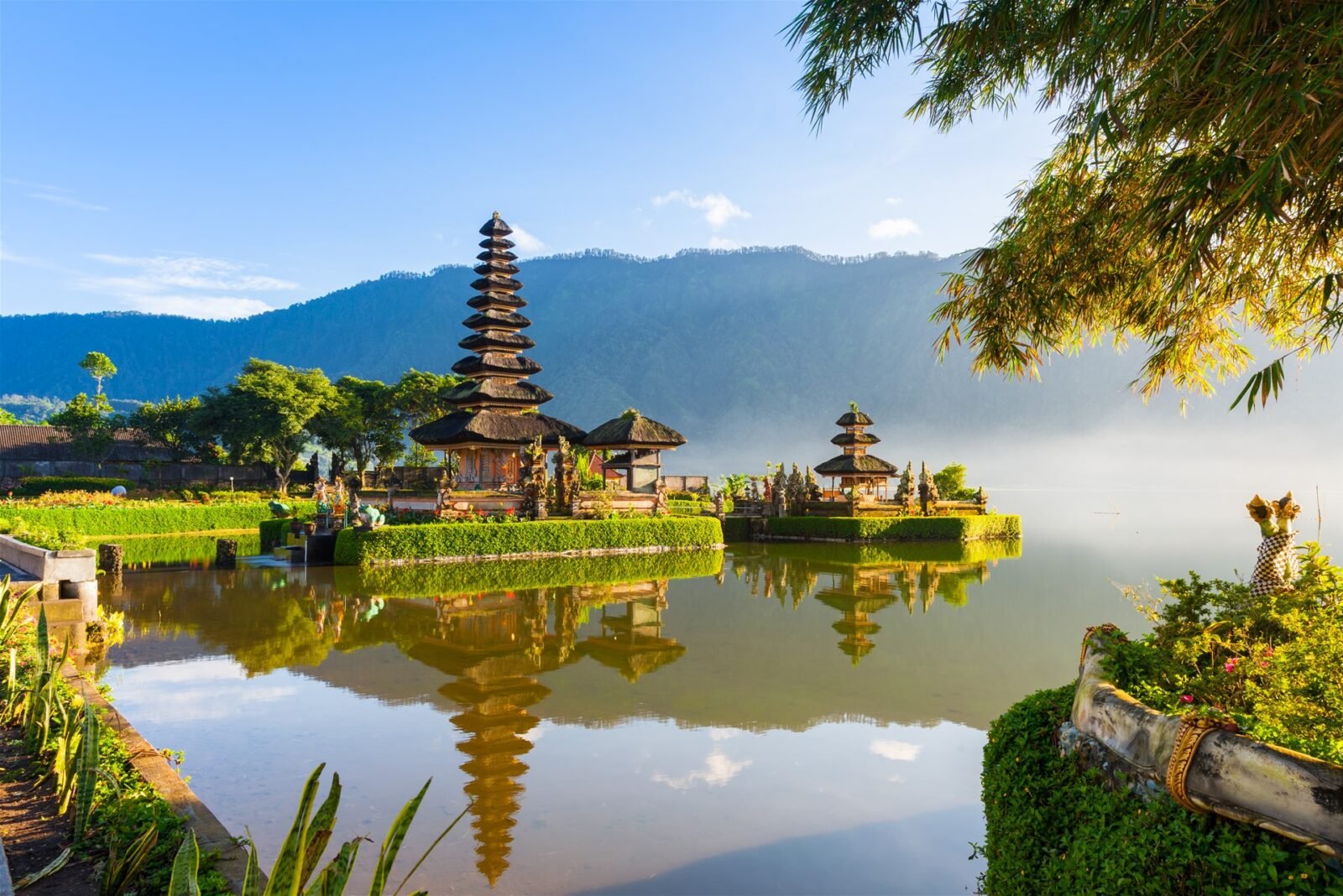
3 Best Things To Do In North Bali, North Bali offers a different pace from the island’s bustling southern areas. Known for its serene beaches, lush landscapes, and cultural richness, the northern region of Bali is a haven for those seeking tranquility, adventure, and an authentic Balinese experience. Whether you’re exploring the natural wonders or immersing yourself in the local culture, North Bali has something unique to offer. Here are the three best things to do in North Bali that should be on every traveler’s itinerary.
1. Things To Do In North Bali : Dolphin Watching at Lovina Beach
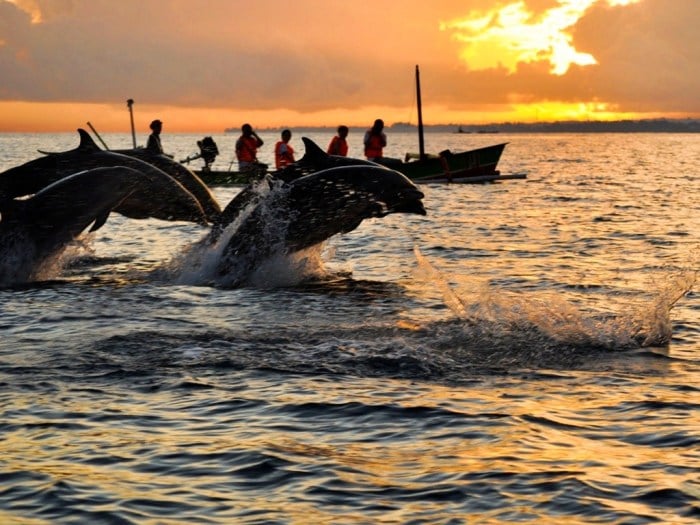
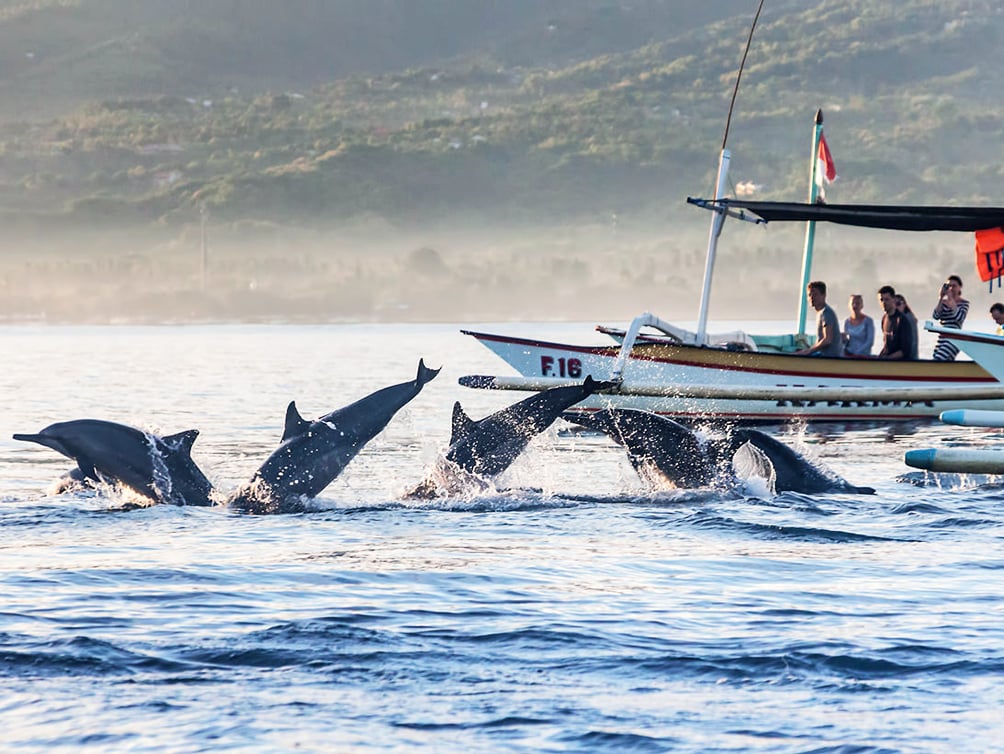
Lovina Beach, located on Bali’s northern coast, is famous for its calm waters and the pods of dolphins that inhabit the area. Dolphin watching has become one of the most popular activities in North Bali, offering visitors a chance to see these playful creatures in their natural habitat while enjoying the stunning sunrise over the Bali Sea.
A Brief History of Lovina Beach
The history of Lovina Beach is closely tied to the development of tourism in northern Bali. The name “Lovina” is believed to have been coined in the 1950s by Panji Tisna, a Balinese prince and writer who was one of the pioneers of tourism in the region. Inspired by his travels to Europe and witnessing the potential of tourism in Bali, Panji Tisna built the first guesthouse in the area, naming it Lovina, which is thought to be derived from the words “Love” and “Ina,” meaning mother in Balinese. The guesthouse, Lovina Beach Hotel, still exists today and is considered a historic landmark in the area.
Over the years, Lovina has grown from a small fishing village into a popular tourist destination, attracting visitors with its serene atmosphere, rich cultural heritage, and diverse marine life. Despite its development, Lovina has managed to retain its traditional charm, with local customs and practices still playing a central role in daily life.
The Experience:
- Early Morning Adventure: The best time to see dolphins in Lovina is at sunrise, so tours typically start before dawn. You’ll board a traditional Balinese outrigger boat (jukung) and head out to sea as the first light of day breaks. The calm waters and the cool morning air create a serene atmosphere as you wait for the dolphins to appear.
- Dolphin Sightings: As the sun rises, the dolphins begin to surface, often swimming alongside the boats and leaping out of the water. Watching these graceful animals in the wild is a magical experience, and the backdrop of the sunrise makes it even more special. Many tours also provide information about the different species of dolphins in the area and their behavior.
- Snorkeling and Swimming: Some dolphin-watching tours also offer the opportunity to snorkel in the calm waters after the dolphin sightings. The coral reefs around Lovina are home to a variety of marine life, making it a great spot for snorkeling.
Entrance Ticket Price:
- Dolphin Watching Tour: IDR 100,000 to IDR 150,000 per person (approximately USD 7 to USD 10).
This fee usually includes:
- A seat on a traditional Balinese outrigger boat (jukung) for the dolphin-watching tour.
- The services of an experienced local guide who will help you spot dolphins and provide information about the area.
Additional Costs:
- Private Boat Hire: For a more personalized experience, you can hire a private boat for around IDR 500,000 to IDR 800,000 (approximately USD 35 to USD 55). This allows you more flexibility in terms of timing and the opportunity to explore other parts of the coastline.
- Snorkeling: Some tours offer snorkeling as an additional activity for an extra fee, typically around IDR 50,000 to IDR 100,000 (approximately USD 3.50 to USD 7).
Why you should try to doing that?
Dolphin watching at Lovina Beach is a unique and unforgettable experience that combines the beauty of Bali’s northern coast with the thrill of seeing wildlife in its natural environment. The early morning journey, the peacefulness of the sea, and the joy of encountering dolphins make this activity one of the highlights of any trip to North Bali.
Tips for visiting:
- Book Early: Dolphin watching is popular, so it’s advisable to book your tour in advance, especially during the peak tourist season.
- Bring a Camera: The sunrise and dolphin sightings provide excellent photo opportunities, so don’t forget to bring a camera with a good zoom lens.
- Dress Warmly: Mornings can be cool on the water, so bring a light jacket or sweater.
2. Things To Do In North Bali: Gitgit and Sekumpul Waterfalls
North Bali is home to some of the island’s most stunning waterfalls, set amidst lush jungles and rice terraces. Gitgit and Sekumpul are two of the most famous waterfalls in the region, each offering a unique and awe-inspiring experience.
Gitgit Waterfall
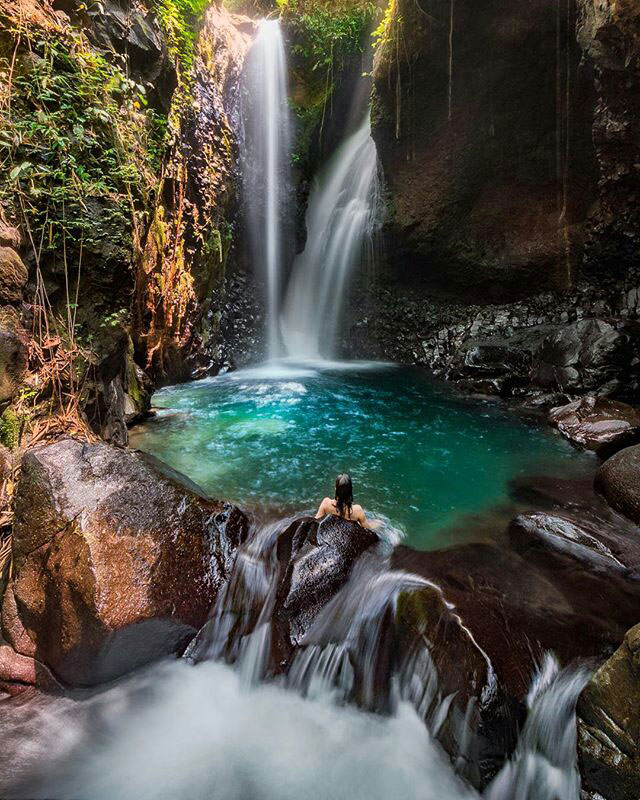
- Accessibility: Gitgit Waterfall is one of the most accessible waterfalls in Bali, located just 10 kilometers south of Singaraja. A short walk from the parking area through a scenic path leads you to the waterfall, making it an easy visit for all ages.
- The Falls: Gitgit is a single-drop waterfall that plunges 35 meters into a rocky pool below. Surrounded by dense tropical vegetation, the waterfall creates a peaceful and refreshing atmosphere. Visitors can swim in the cool, clear waters or simply relax and enjoy the natural beauty of the area.
- Local Culture: Along the path to the waterfall, you’ll pass by local vendors selling souvenirs, traditional snacks, and drinks. It’s a great opportunity to interact with the local community and experience Balinese hospitality.
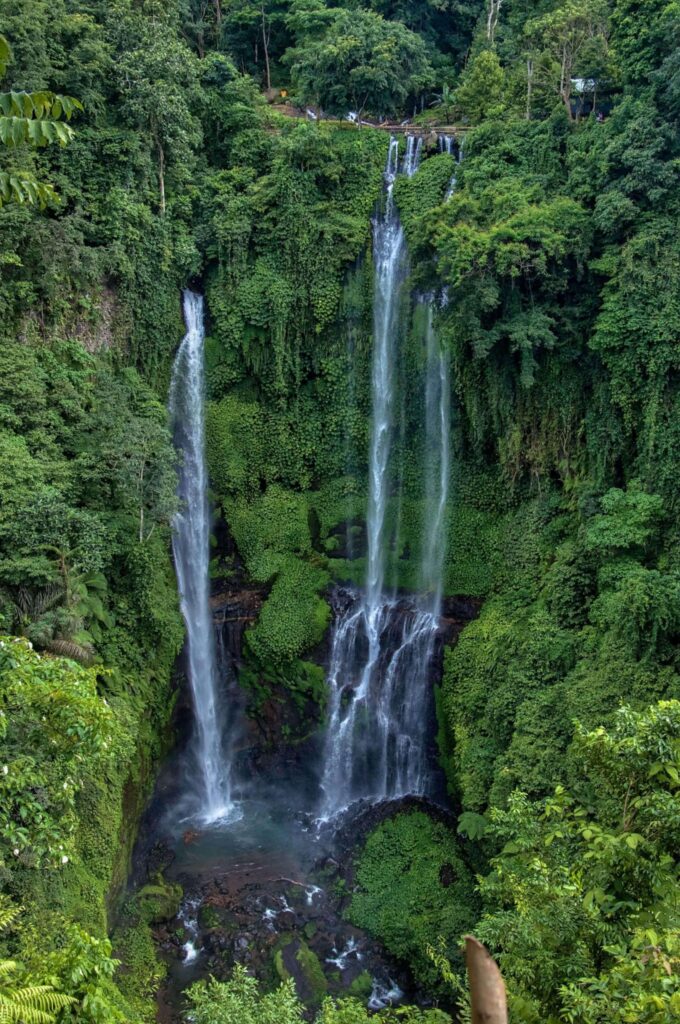
- A Challenging Journey: Sekumpul Waterfall is often considered one of the most beautiful waterfalls in Bali, but it requires a bit more effort to reach. Located about 20 kilometers east of Lovina, Sekumpul consists of multiple cascades that tumble down a steep cliff surrounded by lush greenery. The journey to Sekumpul involves a trek through the jungle, crossing rivers, and descending steep steps, but the reward is well worth the effort.
- The Falls: The main attraction of Sekumpul is its collection of seven waterfalls, each cascading from a different height. The tallest waterfall reaches up to 80 meters. The sight of the water plunging into the emerald pool below, surrounded by verdant foliage, is nothing short of breathtaking.
- Adventure and Solitude: Unlike Gitgit, Sekumpul is less crowded, offering a more adventurous and solitary experience. The trek itself is an adventure, with the sound of the jungle and the rushing water adding to the sense of exploration.
Entrance Ticket Prices:
- Gitgit Waterfall:
- Entrance Fee: IDR 20,000 per person (approximately USD 1.50).
- Sekumpul Waterfall:
- Entrance Fee: IDR 20,000 to IDR 30,000 per person (approximately USD 1.50 to USD 2).
- Local Guide Fee (Optional but recommended): IDR 125,000 to IDR 200,000 per group (approximately USD 9 to USD 14)
Why you should come to this Place?
Exploring the waterfalls of North Bali provides a perfect combination of natural beauty, adventure, and cultural immersion. Whether you’re looking for an easy visit like Gitgit or an adventurous trek to Sekumpul, the waterfalls offer a refreshing escape into Bali’s lush and untouched landscapes.
Tips for visiting:
- Wear Appropriate Footwear: The trails to the waterfalls can be slippery, especially after rain, so wear sturdy shoes with good grip.
- Bring Swimwear: Both waterfalls have pools where you can swim, so bring swimwear and a towel.
- Hire a Guide: For Sekumpul, hiring a local guide is recommended, as they can help you navigate the trails and provide insights into the area.
3. Things To Do In North Bali: Banjar Hot Springs and Brahmavihara-Arama Buddhist Monastery
North Bali is not only rich in natural beauty but also in cultural and spiritual sites. The Banjar Hot Springs and Brahmavihara-Arama Buddhist Monastery offer a unique combination of relaxation and spiritual exploration, making them must-visit destinations for those traveling in the region.
Banjar Hot Springs (Air Panas Banjar):
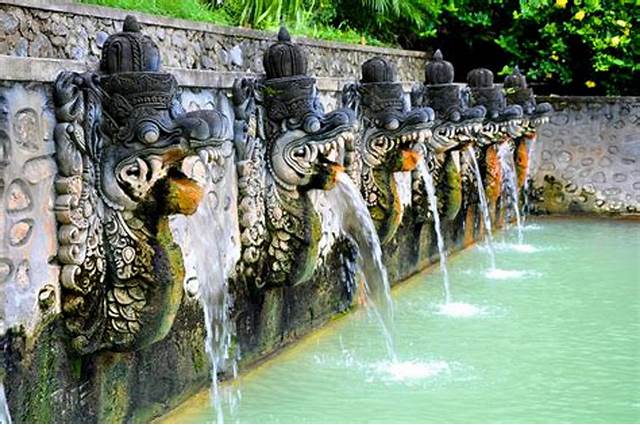
- The Setting: Tucked away in the jungle, about 10 kilometers west of Lovina, the Banjar Hot Springs are a serene retreat where visitors can soak in warm, sulfur-rich waters. The springs are set within a beautifully landscaped garden, with three main pools that are fed by natural hot springs. The water flows from the mouths of stone-carved naga (mythical serpent) statues, creating a soothing and therapeutic experience.
- Therapeutic Benefits: The water at Banjar Hot Springs is believed to have healing properties, particularly for skin conditions and muscle aches. Visitors often spend time soaking in the warm pools, enjoying the tranquil atmosphere, and taking in the surrounding greenery.
- Family-Friendly: The hot springs are popular with both locals and tourists, and the site includes facilities such as changing rooms, a small restaurant, and souvenir shops. The relaxed environment makes it a great spot for families and those looking to unwind.
Entrance Ticket Price:
- Entrance Fee: IDR 20,000 per person (approximately USD 1.50).
This fee grants you access to all the hot spring pools, which vary in temperature and depth, as well as the surrounding gardens.
Additional Costs:
- Towel and Locker Rental: Towels and lockers are available for rent at the entrance for a small fee of around IDR 5,000 to IDR 10,000 (approximately USD 0.35 to USD 0.70).
- Massage Services: On-site massage services are available for an additional fee, typically ranging from IDR 50,000 to IDR 100,000 (approximately USD 3.50 to USD 7) for a 30-minute session.
- Food and Beverages: There is a small restaurant and café on-site where you can purchase refreshments, meals, and snacks after your soak in the hot springs.
Brahmavihara-Arama Buddhist Monastery
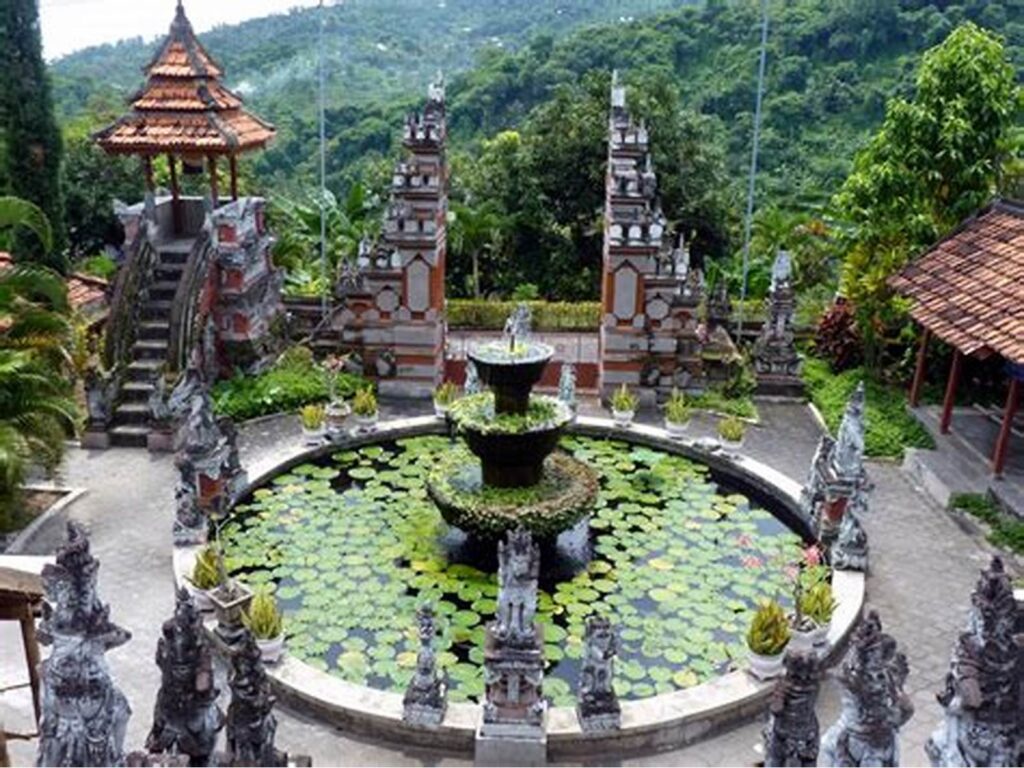
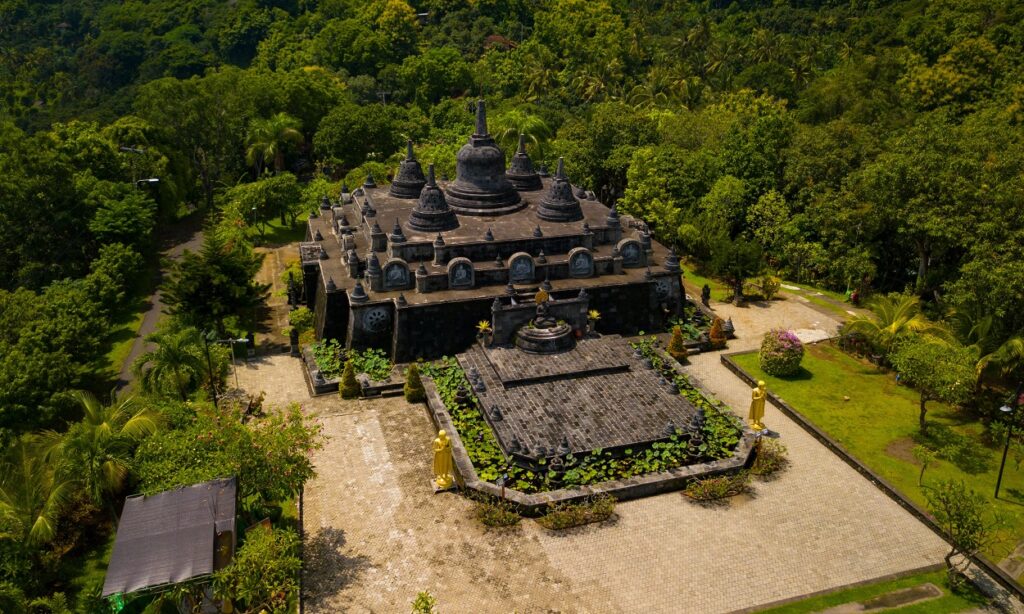
History and Significance
Brahmavihara-Arama is the largest Buddhist monastery in Bali and serves as an important center for Buddhist practice and education on the island. The monastery was established in 1970 under the guidance of a Balinese Buddhist monk, Bante Girirakkhito Mahathera. It was built to provide a place for the local Buddhist community to gather, practice, and study, as well as to promote the teachings of Buddhism in Bali.
The name “Brahmavihara-Arama” is derived from the Pali words “Brahmavihara,” which refers to the four sublime states of mind in Buddhism—loving-kindness (Metta), compassion (Karuna), empathetic joy (Mudita), and equanimity (Upekkha)—and “Arama,” meaning a place or sanctuary. Together, the name signifies a place dedicated to cultivating these noble qualities.
Although Bali is predominantly Hindu, Buddhism has a significant historical presence on the island, dating back to the 7th century when the Mahayana Buddhist kingdom of Sriwijaya exerted influence over the region. Brahmavihara-Arama represents this long-standing Buddhist tradition in Bali, serving as a bridge between the island’s Hindu majority and its Buddhist minority.
- The Monastery: Located a short drive from the hot springs, Brahmavihara-Arama is the largest Buddhist monastery in Bali. Perched on a hill overlooking the surrounding countryside, the monastery offers a peaceful and spiritual environment for visitors. The complex includes several meditation halls, gardens, and a stunning replica of the Borobudur temple in Java.
- Meditation and Reflection: Brahmavihara-Arama is a place of quiet reflection and meditation. Visitors are welcome to explore the monastery grounds, participate in meditation sessions, or simply enjoy the serene atmosphere. The beautiful architecture and tranquil setting make it a perfect place to connect with Bali’s spiritual side.
- Cultural Experience: The monastery is also a center for Buddhist education and practice in Bali, offering a glimpse into the island’s diverse religious landscape. The blend of Balinese and Buddhist architecture and art adds to the cultural richness of the site.
Visiting the Banjar Hot Springs and Brahmavihara-Arama provides a unique combination of relaxation and spiritual exploration. The hot springs offer a soothing escape into nature, while the monastery provides an opportunity to connect with Bali’s spiritual heritage. Together, they offer a well-rounded experience that showcases the diversity and tranquility of North Bali.
Tips for visiting:
- Visit in the Morning: The hot springs can get busy, so it’s best to visit in the morning when it’s quieter.
- Dress Modestly: When visiting the monastery, dress modestly and be respectful of the sacred spaces.
- Combine the Visit: The hot springs and monastery are close to each other, making it easy to visit both in one trip.
Conclusion
Things To Do In North Bali is a region that offers a wealth of experiences for those looking to explore beyond the more touristy areas of the island. From the magical experience of dolphin watching at Lovina Beach to the adventure of exploring waterfalls like Gitgit and Sekumpul, and the tranquility of the Banjar Hot Springs and Brahmavihara-Arama Monastery, there’s something for every traveler in this peaceful part of Bali. These three activities showcase the natural beauty, cultural richness, and spiritual depth of North Bali, making it a must-visit destination for anyone seeking to discover the island’s more serene and authentic side.


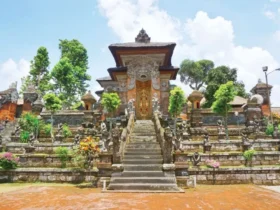

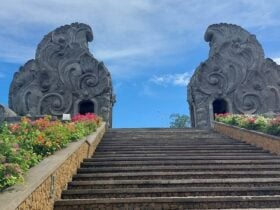
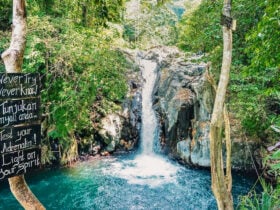
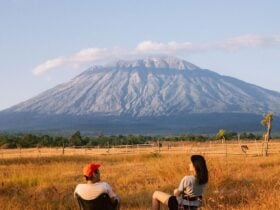
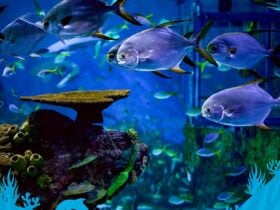

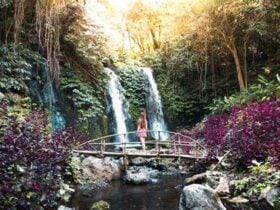
Leave a Review